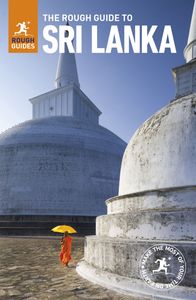Best time to visit Sri Lanka
When planning your trip to Sri Lanka, keep in mind that the island's weather stays fairly consistent year-round, thanks to its proximity to the equator. However, there are two monsoon seasons that significantly affect different regions at different times.
From December to March, you'll find the peak tourist season in full swing, particularly along the west and south coasts, and in the Cultural Triangle. Expect dry, sunny weather perfect for beach outings, sightseeing, and outdoor adventures.
April through September marks the low season, with the east coast enjoying its best weather while the south and west coasts experience monsoon rains. Despite the rainfall, it's still a good time to explore the Cultural Triangle and central regions, which tend to stay relatively dry.
If you're looking for a compromise between seasons, consider visiting during the transitional period from October to November. While there might be some rain, it's usually not as heavy or persistent, and you can take advantage of lower prices and fewer crowds.
For more detailed weather insights, be sure to check out our guide to the best time to visit Sri Lanka.
How many days do you need in Sri Lanka?
Generally, a week can offer a well-rounded experience. With seven days at your disposal, you can hop from the ancient marvel of Sigiriya to the cultural hub of Kandy, and then wrap up your journey with some seaside relaxation in Galle.
That said, ten days is in a lot of ways better. With those extra three days, you can sneak off the beaten path to Ella or Nuwara Eliya, explore tea plantations, or just travel at a more relaxed pace.
Ideally speaking, however, if your budget allows, then carve out a full two weeks. Trust us, it's worth it. From the highlands to the sun-kissed shores, you'll have all the time you need to soak in Sri Lanka. Plus, with the extended stay, you can really enjoy every moment without feeling rushed.
For more information, see our Sri Lanka itineraries for inspiration.


















